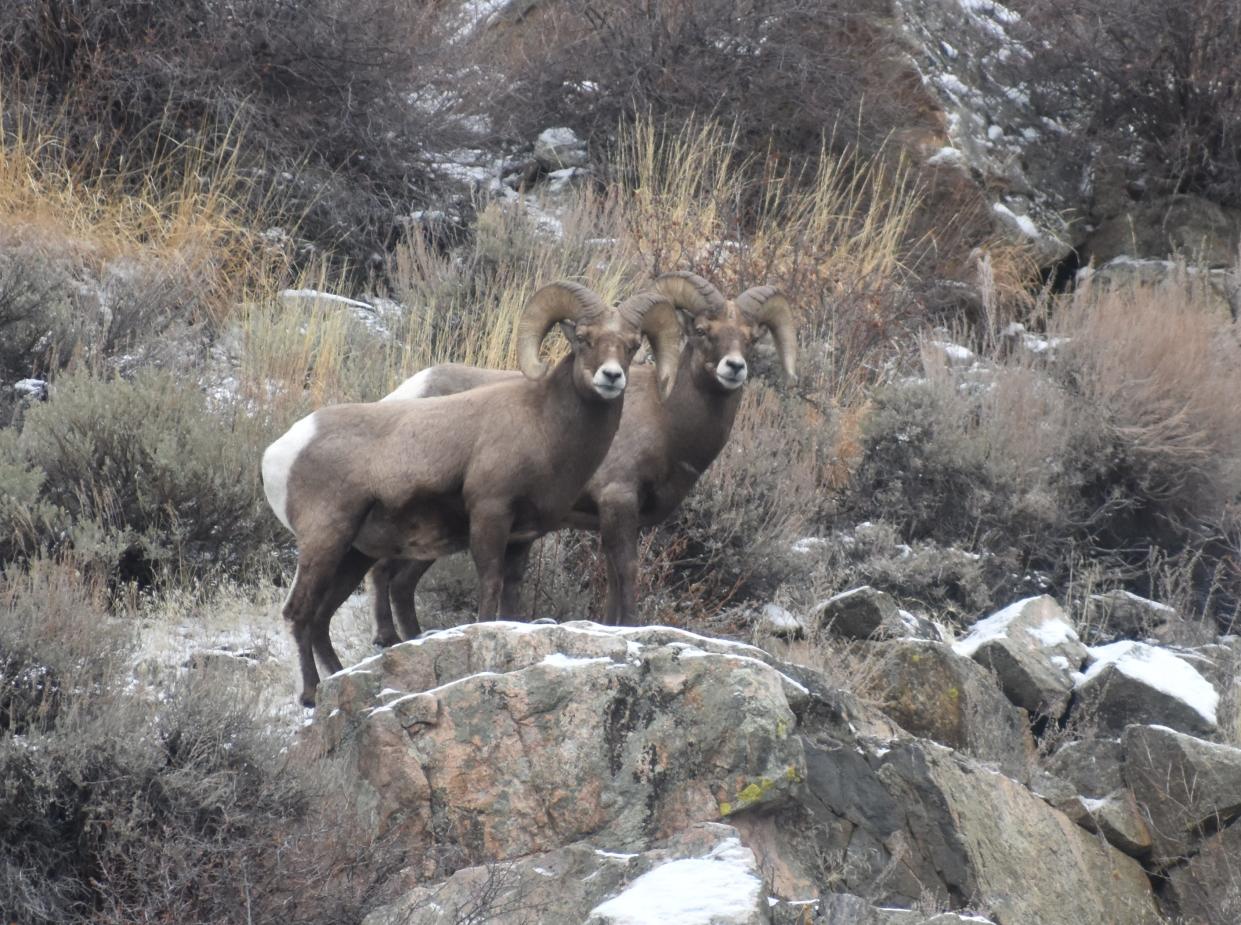Wild bighorns in peril in Colorado and throughout the Rocky Mountain West

I’ve been afforded the rare opportunity to kneel beside Colorado’s most iconic animal: The Rocky Mountain bighorn. When I worked for Colorado Parks and Wildlife I attended capture projects where biologists examined bighorns and attached tracking collars.
I placed my hands on the bighorns’ thick, rough coats and observed them in awe. At the shoulder most measured about four feet in height, their bodies solid and muscular, their hooves thick but pliable — providing the platforms needed for leaping among cliffs and climbing steep slopes.
I thought of how they live, constantly enduring the punishing mountain terrain. For tens of thousands of years, bighorns have survived the unrelenting sun, harsh rain, wind, winter’s cold and deep snow. They nibble grass and shrubs, lick lichen from rocks, sip from tiny streams, somehow obtaining their nutritional needs from these meager sources. Then to reproduce: The rams fight for dominance; the ewes give birth on mountainsides and nurture lambs through difficult conditions.

Based on the writings of pioneers, bighorns were once the most abundant ungulate in the Rockies — likely numbering in the hundreds of thousands in Colorado. Today, CPW estimates a total statewide population of only about 7,000, and the number is likely declining. To put that in perspective: CPW estimates the statewide elk population at 230,000 and mule deer at 600,000.
Habitat loss for bighorns is certainly a factor. But the biggest cause of the decline is respiratory disease caused by transmission of bacteria from domestic sheep. Thousands of domestics graze in the alpine terrain favored by bighorns. While sheep producers argue otherwise, disease spread is a fact proven beyond a doubt.
Bighorns get in trouble when an adult, usually a young ram, wanders into a flock of domestics and picks up pathogens. When the wanderers return, the bacteria are spread and bighorns have no immunity.
The effect is catastrophic. All-age die-offs have occurred. Pregnant ewes that survive eventually pass the pathogens to their offspring and infected lambs seldom survive more than a few months. Both scenarios result in significant population declines.
The pneumonia, too, causes an agonizing death. Infected bighorns are observed coughing and wheezing, trying desperately to breathe. Essentially, they drown as their lungs fill with fluid.
The domestics use public land managed by the Bureau of Land Management and the U.S. Forest Service. Leaders of those outfits know the problem full well, but they resist closing grazing allotments. The members of the Colorado Parks and Wildlife Commission, the body that sets policy for the state agency and is supposed to protect wildlife, is doing nothing to defend bighorns.
The inaction, of course, is heavily influenced by politics. Unfortunately, the few “woolgrowers” in Colorado hold inordinate political power because their agricultural status is somehow held sacrosanct by local, state and federal politicians. They, apparently, do not see the value of this rare wildlife species. And to boot, the woolgrowers are subsidized by U.S. taxpayers through sweetheart grazing-fee deals: producers pay just $1.35 per month per “animal unit” comprised of five sheep.
An allotment northeast of Durango was closed a few years ago after the National Wildlife Federation worked a deal with the lease holder. The NWF spent $83,000 to obtain the allotment; the amount received by the rancher was not disclosed. The point is that a private organization paid for what should have been done by government agencies.
Producers say their “heritage” is at risk if they aren’t allowed to use public lands. They want to pass this agricultural relic to their kids. But it is the “heritage” of the natural world, a heritage that has been intact for tens of thousands of years, that is at risk of being lost. I want future generations to know that there will always be wild bighorns on the landscape.
This is the time of year when sheep swarm our public lands. High-country hikers will know when they get a whiff of a 1,000-head herd. Domestics consume wildflowers, trample the tundra, and their to-the-ground grazing habits cause significant erosion.
If you’re hiking and see a wild bighorn near a domestic herd, please contact Colorado Parks and Wildlife. That animal, if it is found — and that’s unlikely — will be killed in the futile hope that its destruction will prevent disease spread.
You can also participate in a Ccitizen science effort coordinated by the Mountain Studies Institute (mountainstudies.org/bighorndetails) by reporting sightings through a phone app.
And if you are moved by the plight of these magnificent animals, call politicians, Forest Service and BLM officials and write to CPW’s commissioners. You never know, one of them might listen and attempt to do the right thing.
Joe Lewandowski worked as a public information officer for CPW for 16 years. Now retired, he lives in Durango.
This article originally appeared on Fort Collins Coloradoan: Wild bighorns in peril in Colorado and the Rocky Mountain West

